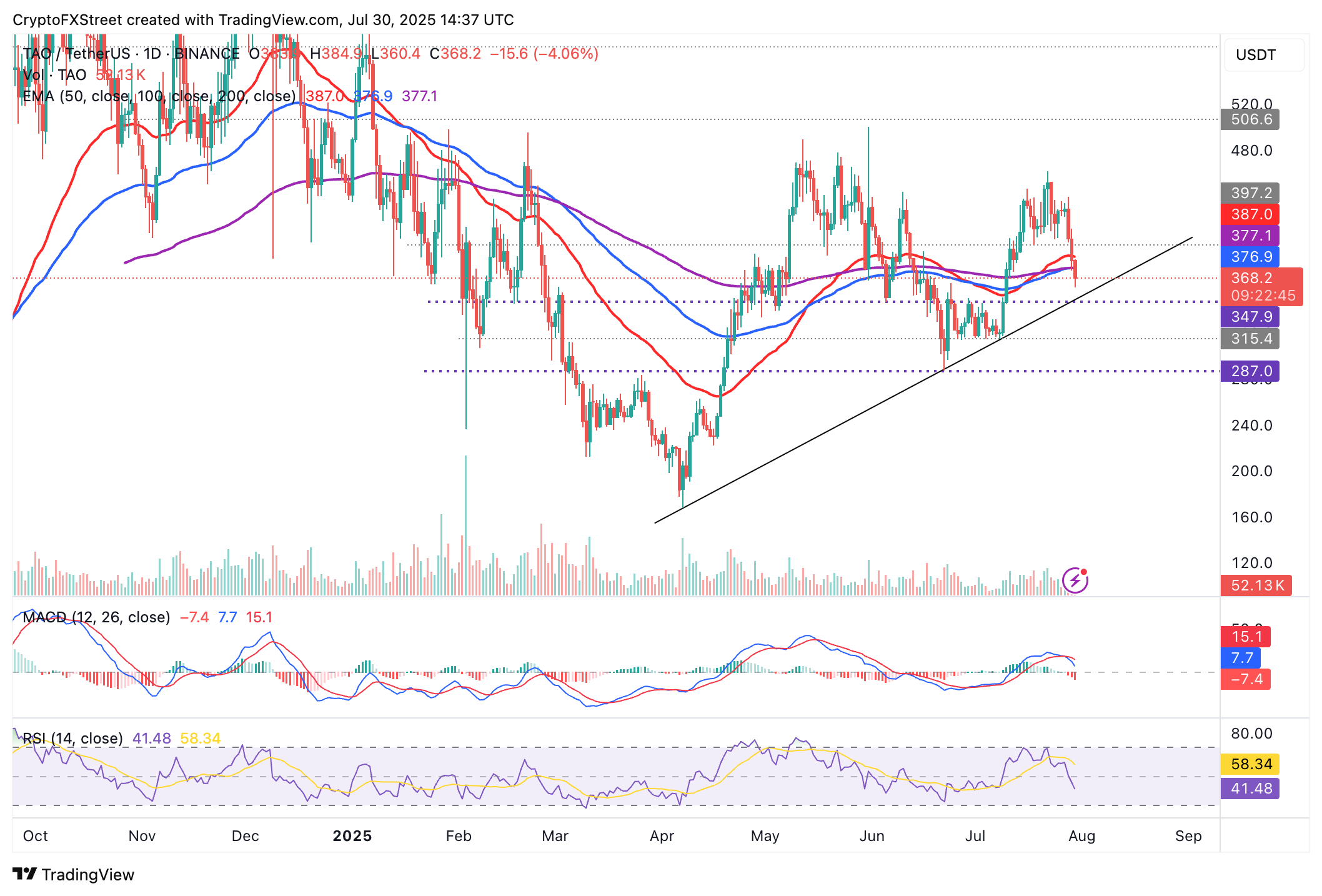Bittensor Rocked by Volatility as AI Token Market Loses 13% in Just 7 Days
AI tokens take a nosedive—Bittensor caught in the storm.
Another week, another crypto bloodbath. The AI token sector just got a brutal reality check as its market cap plunged 13%—and decentralized intelligence protocol Bittensor is riding the rollercoaster harder than most. Traders are sweating, hodlers are praying, and VCs are suddenly 'reallocating resources' (read: running for the exits).
Volatility isn't a bug in crypto—it's the whole damn business model. But when an entire sector tanks this fast, even the degens pause mid-leverage trade. Is this a healthy correction or the start of another 'narrative rotation'? Place your bets—the house always wins.

Bittensor futures Open Interest | Source: CoinGlass
The steady OI, which represents the notional value of outstanding futures or options contracts, indicates that leverage bets are mostly bullish, thus increasing the probability of a trend reversal.
Bittensor leads AI token decline
Tokens in the AI sector are facing increasing volatility ahead of the Fed interest rate decision, with Bittensor headlining the decline. TAO is down 7% over the past 24 hours and 17% in the past week.
Virtuals Protocol (VIRTUAL), the blockchain platform for AI agents, has declined 6.4% in the last 24 hours, bringing the total drop in a week to 27%. AIOZ Network also trimmed gains by 17% in seven days, reflecting the surge in volatility among AI tokens.
Interest in AI tokens has generally slowed in the past week, evidenced by the market capitalisation shrinking by over 13% to $28 billion. The next few days provide insight into the direction the market could take, considering the rally in July and emerging macroeconomic risks such as the reciprocal tariffs taking effect in the United States (US) on Friday.
Technical outlook: Bittensor’s downtrend could persist
TAO bears show no signs of exhaustion, extending the decline for three consecutive days. Key technical indicators, including the Moving Average Convergence Divergence (MACD) that triggered a sell signal on Monday and the Relative Strength Index’s (RSI) drop to 41 after peaking NEAR overbought territory in July, reinforced the bearish grip.
Traders may continue reducing exposure amid the surge in volatility, especially with Bittensor sitting below the 50-day Moving Average (EMA) currently at $387 and the 200-day EMA in confluence with the 100-day EMA at around $377.

TAO/USDT daily chart
Key areas of interest for traders include the horizontal support at $347, which was tested as resistance in late June, and the ascending trend line on the daily chart. If sentiment improves following the Fed interest rate decision on Wednesday, a quick reversal could ensue from the current price level or support at $347 toward the initial resistance at $400.
Open Interest, funding rate FAQs
How does Open Interest affect cryptocurrency prices?
Higher Open Interest is associated with higher liquidity and new capital inflow to the market. This is considered the equivalent of increase in efficiency and the ongoing trend continues. When Open Interest decreases, it is considered a sign of liquidation in the market, investors are leaving and the overall demand for an asset is on a decline, fueling a bearish sentiment among investors.
How does Funding rates affect cryptocurrency prices?
Funding fees bridge the difference between spot prices and prices of futures contracts of an asset by increasing liquidation risks faced by traders. A consistently high and positive funding rate implies there is a bullish sentiment among market participants and there is an expectation of a price hike. A consistently negative funding rate for an asset implies a bearish sentiment, indicating that traders expect the cryptocurrency’s price to fall and a bearish trend reversal is likely to occur.

